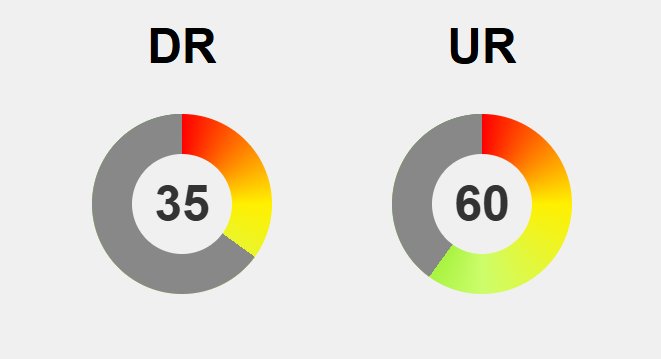Are you confusing plantar warts with corns, risking ineffective treatment and ongoing discomfort? While both present as rough, raised bumps on the soles of your feet, their roots couldn’t be more different—warts stem from a contagious virus (HPV), marked by tiny black dots and an uneven surface, whereas corns result from repeated friction, characterized by smooth, hardened patches. Proper diagnosis is crucial; healthcare professionals rely on visual cues, dermoscopy, and sometimes biopsy to distinguish them accurately. Treatment strategies vary: warts often require freezing, topical acids, or advanced therapies, while corns benefit from pressure relief and proper footwear. Emerging diagnostic tools and innovative treatments promise less invasive, more effective solutions, yet misidentification can prolong pain and spread infection. Staying informed and seeking professional advice ensures targeted care, helping you regain comfort and prevent future foot health issues—because the difference between a virus and mechanical stress matters more than you might think.
Uncovering the Differences Between Plantar Warts and Corns: A Key to Proper Foot Care
Foot conditions like plantar warts and corns often look quite similar at first glance, but their origins and characteristics are very different. Plantar warts are caused by a viral infection—specifically the human papillomavirus (HPV)—which enters through tiny cracks or cuts on the sole of the foot. These warts tend to appear as rough, grainy bumps that may have small black dots, which are clotted blood vessels. The black dots are a hallmark sign that helps distinguish warts from other skin issues.
Corns, on the other hand, develop as a response to repeated friction or pressure, often from poorly fitting shoes or abnormal walking patterns. Over time, the skin thickens as a protective measure, forming dense, hardened patches that usually appear over bony areas or where shoes constantly rub. Unlike warts, corns are not caused by a virus and do not have black dots. They are simply the skin’s way of toughening up against ongoing irritation. Recognizing this difference is crucial because it influences how each condition should be treated.
While both conditions can cause discomfort and may look somewhat similar—both can be raised, rough, and sometimes painful—their causes are distinct enough to guide diagnosis. Warts tend to have an uneven, rough surface with tiny black dots, whereas corns are smoother and more uniform, with a dense, central core. Differentiating between them isn’t just about appearance; it’s about understanding their origins, which directly affects the treatment approach.
Knowing whether a bump is viral or mechanical in origin helps prevent ineffective treatments and unnecessary discomfort. Warts often require topical acids, freezing, or other medical procedures to remove the virus. Corns, however, respond well to pressure relief, proper footwear, and simple trimming of the thickened skin. Misidentifying these conditions can lead to prolonged pain, worsening symptoms, or even spreading the virus if a wart is treated as a corn.
Understanding these basic differences provides a solid foundation for better foot health. It helps you make smarter choices—whether it’s seeking professional advice or managing minor bumps at home. Proper diagnosis ensures you target the right treatment, speed up recovery, and keep your feet comfortable and healthy. Recognizing the signs and causes of plantar warts and corns is the first step toward effective relief and ongoing foot wellbeing.
The Roots of Foot Bumps: Understanding Plantar Warts and Corns
Plantar warts and corns have very different roots, even though they can look alike at first glance. Warts are caused by the human papillomavirus (HPV), which infects the skin through tiny cracks or cuts on the bottom of the foot. Once inside, the virus triggers abnormal cell growth, resulting in rough, grainy bumps that often display small black dots—clotted blood vessels—at their centers. These black dots are a telltale sign that helps distinguish warts from other skin issues. Because HPV thrives in warm, moist environments like sweaty shoes or communal showers, plantar warts are especially common among athletes or those who spend a lot of time barefoot in public spaces.
In contrast, corns develop as a protective response to repeated friction or pressure. When the skin encounters ongoing irritation, it thickens over time to shield the underlying tissues. These dense, hardened patches typically form over bony prominences or areas where shoes constantly rub. Unlike warts, corns are not caused by a virus—they are purely a mechanical reaction of the skin. They tend to have a smooth surface with a clearly defined, dense core, and usually develop gradually in response to ill-fitting footwear or abnormal gait patterns.
Understanding these basic definitions makes it easier to tell them apart. Warts usually have an uneven, rough surface with tiny black dots, indicating blood vessels that have clotted. Corns, on the other hand, are smoother, more uniform, and often have a hard, callused center. The cause is the key difference: a viral infection for warts versus mechanical pressure for corns. This distinction guides treatment options, as warts may require topical acids or freezing, while corns often respond best to pressure relief and proper footwear.
Knowing where each originates also clarifies their potential to spread or recur. Warts are contagious and can spread through direct contact or contaminated surfaces, especially in communal environments. Corns are not infectious; they signal that your skin is reacting to persistent friction. Addressing them involves reducing pressure and avoiding irritants rather than worrying about contagion. Accurate identification prevents unnecessary treatments and helps you manage foot health more effectively.
Having a clear grasp of these foundational differences sets the stage for proper diagnosis and treatment. Whether you’re dealing with a stubborn bump or seeking to prevent future issues, understanding whether a growth is viral or mechanical makes all the difference. This knowledge helps you choose the right approach—be it medical intervention, pressure management, or preventive measures—ensuring your feet stay healthy, comfortable, and pain-free.
How Experts Distinguish Foot Conditions Today: Tools and Techniques
When it comes to distinguishing plantar warts from corns, healthcare professionals rely on a combination of visual examination and specialized diagnostic tools. A close look at the growth often provides the first clues. Warts typically appear as rough, uneven bumps with small black dots—clotted blood vessels—while corns are smoother with a dense, hardened center. However, these visual cues can sometimes be subtle or confusing, especially for those without medical training.
Dermoscopy has become a valuable tool in clinical practice, offering magnified views that reveal patterns not visible to the naked eye. Under dermoscopy, warts display characteristic dotted or linear blood vessels, helping clinicians differentiate them from corns, which lack these vascular features. This technique allows for quick, accurate identification without invasive procedures, reducing uncertainty and unnecessary treatments.
In cases where visual inspection and dermoscopy don’t provide a definitive answer, a biopsy might be necessary. Taking a small tissue sample for microscopic analysis confirms whether the growth contains virus-infected cells—indicating a wart—or is simply a thickened patch of skin typical of a corn. Although more invasive, biopsy provides certainty, particularly when treatments are ineffective or if other skin conditions are suspected.
Patient history also offers important context. Warts often cause discomfort under pressure and may spread or multiply if untreated. Recent exposure to communal environments like gyms or pools increases suspicion of a wart. Conversely, corns tend to develop over bony prominences or areas of persistent friction, with no contagious potential. Recognizing these patterns helps narrow down the diagnosis and guides appropriate management.
While self-assessment might seem straightforward, visual signs alone can sometimes mislead. Consulting a healthcare professional ensures an accurate diagnosis, especially when conditions are atypical or resistant to initial treatments. Advanced tools like dermoscopy and biopsy provide clarity, enabling targeted therapies that address the root cause. This approach minimizes trial-and-error, speeds recovery, and prevents unnecessary discomfort.
In summary, identifying plantar warts versus corns involves more than just a quick glance. It requires a combination of careful observation, specialized imaging, and patient history. Using these methods ensures you get the right treatment—whether it’s topical medication, freezing, or pressure relief—saving time and reducing the risk of complications. Proper diagnosis is the first step toward healthier, more comfortable feet.
For those seeking further information on foot health and effective treatment options, exploring comprehensive resources can be very helpful. Understanding the differences between common foot conditions ensures you can make informed decisions about your care. To learn more about effective treatments for foot conditions, visit foot care.
Targeted Treatments for Warts and Corns: Tailoring Your Approach for Faster Relief
Treating plantar warts and corns requires approaches tailored specifically to their distinct causes. For plantar warts, the goal is to remove the infected tissue and stimulate the immune response. Over-the-counter options like salicylic acid are common; they work by gradually peeling away the wart’s layers with consistent use over several weeks. If these treatments aren’t effective, clinicians may recommend cryotherapy—freezing the wart with liquid nitrogen to destroy the virus-infected cells. More advanced options, such as laser therapy or immunotherapy, target stubborn or recurrent warts, helping the body fight off the virus more effectively. These procedures are usually performed in a medical setting, ensuring safety and precision.
Corns, on the other hand, are best managed by reducing the pressure and friction that cause them. Wearing well-fitting shoes with ample room for the toes is crucial. Padding or cushioned insoles can help distribute pressure evenly, easing discomfort. When corns become thick or painful, a healthcare professional can carefully trim or pare down the hardened skin. Attempting to cut or remove corns at home risks infection and further irritation, so leaving this to the experts is safest. Addressing the underlying mechanical stress is essential for long-term relief and prevention.
Prevention plays a vital role in avoiding future issues. Regular foot hygiene, such as washing and thoroughly drying your feet, keeps the skin healthy and reduces infection risk. Choosing footwear that fits well and offers support prevents the development of new corns or warts. Using insoles or protective pads can cushion areas prone to friction, decreasing irritation. Catching early signs of a bump or callus allows for prompt intervention—simple footwear adjustments or padding can make a significant difference before problems worsen.
When over-the-counter remedies don’t bring relief or if the condition persists, consulting a healthcare professional is advisable. They can confirm whether you’re dealing with a wart or a corn and recommend the most effective treatment plan. For stubborn or large warts, stronger topical medications, cryotherapy, or laser treatments may be necessary. Proper diagnosis ensures targeted therapy, speeds recovery, and minimizes the risk of recurrence or complications. Professional intervention also helps prevent unnecessary discomfort and further spread.
Combining different approaches often yields the best results. A podiatrist might remove a thickened callus before applying medication to a wart, tackling both the symptom and its cause. Using pressure-relieving footwear or orthotics alongside topical solutions can prevent the recurrence of corns and warts. Addressing mechanical factors is key to long-term foot health, making sure the root causes—pressure and friction—are managed effectively. This integrated approach promotes healthier feet and reduces the chances of future problems.
Emerging treatments are making foot condition management more effective and less invasive. Laser therapy now allows precise targeting of wart tissue with minimal discomfort and quicker healing. Immunotherapy aims to boost the body’s natural defenses, decreasing the likelihood of warts returning. Advances in orthotics and shoe design focus on better support and pressure distribution, helping prevent the formation of new corns. These innovations provide more options for personalized, effective care, making foot health management smoother and more successful.
In the end, understanding the differences in treatment for plantar warts and corns ensures you’re not just addressing symptoms but tackling the root causes. Working with healthcare providers guarantees accurate diagnosis and targeted interventions. Regular foot care, proper footwear, and early treatment are key to maintaining comfort and preventing ongoing discomfort. Staying informed about new therapies and preventive strategies can help you enjoy healthier, pain-free feet for years to come.
Looking Ahead: Innovations in Diagnosis, Treatment, and Prevention of Foot Conditions
Emerging diagnostic tools are set to revolutionize how clinicians distinguish between plantar warts and corns. High-resolution dermoscopy, for example, now offers detailed visualization of skin lesions without invasive procedures, revealing vascular patterns like dotted or linear blood vessels unique to warts. Similarly, optical coherence tomography (OCT) provides cross-sectional images that help assess the depth and structure of these growths, enabling more accurate and early identification. These advancements reduce guesswork, allowing for quicker, more precise diagnoses that improve treatment outcomes.
On the treatment front, new technologies aim to make procedures less invasive yet more effective. Laser therapy, for instance, now targets wart tissue with pinpoint accuracy, minimizing discomfort and speeding up healing times. Immunotherapy approaches stimulate the body’s natural defenses to fight off HPV, significantly lowering recurrence rates and offering hope for more durable results. These options are increasingly available in outpatient settings, making advanced care accessible without extensive downtime.
Prevention strategies are evolving alongside diagnostics and treatments. Custom orthotics and supportive insoles are designed to better distribute pressure and reduce friction, addressing a key mechanical cause of corns. Advances in shoe design now focus on improved fit and support, which can help prevent the formation of new corns and reduce the risk of warts by minimizing skin trauma. Public health campaigns emphasize foot hygiene and proper footwear, especially in communal spaces like gyms and pools, to curb HPV transmission and avoid new infections.
Digital tools and smartphone apps are emerging to aid early detection. These platforms allow individuals to photograph and analyze suspicious growths, providing guidance on whether to seek professional advice. This technology bridges the gap between at-home care and clinical diagnosis, encouraging prompt action that can prevent complications and reduce unnecessary treatments.
Research into vaccines targeting HPV strains associated with plantar warts offers promising prospects. While still in development, these vaccines aim to prevent infection altogether, shifting the focus from treatment to prevention. A successful vaccine could drastically reduce the incidence of warts, easing the burden on healthcare resources and sparing people from persistent discomfort.
Personalized medicine is also gaining ground, with genetic and molecular insights helping identify why some individuals are more prone to recurrent warts or stubborn corns. Tailored therapies based on this understanding could improve treatment success rates and reduce recurrences, making foot care more effective and long-lasting. These advances promise a future where foot conditions are managed with greater precision and fewer setbacks.
Ultimately, the combination of better diagnostics, innovative treatments, and smarter prevention strategies will make foot condition management more accessible, effective, and comfortable. As technology continues to advance, managing plantar warts and corns will become less invasive and more successful, helping people enjoy healthier, pain-free feet well into the future.






